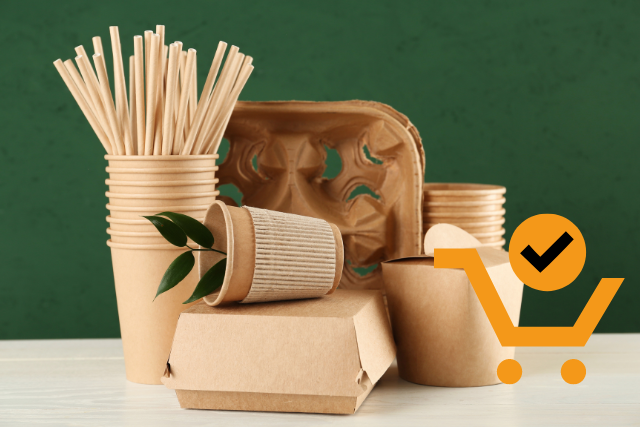Are you looking to make some extra money from the comfort of your own home? Selling products from home is a great way to do just that. You can venture into various businesses and have flexible hours, giving yourself more time for family, friends, and hobbies.
Whether you’re looking to start an e-commerce business or sell goods through direct sales methods, there are many routes you can take when it comes to working from home.
Table of Contents
Introduction to Selling Products from Home
Selling products online can provide you with a great source of income while allowing you to set your hours and work on your terms. Whether you are selling items that you have made yourself or products that a third party supplies, there are numerous ways to get started selling products from home.
One of the best ways to begin is by utilizing a platform like Etsy, eBay, or Shopify, where users can quickly create their store and start listing items for sale. You must create attractive item descriptions, set competitive prices and provide excellent customer service to attract shoppers who may also become repeat customers. Additionally, good marketing skills will help increase your shop’s visibility and drive more sales.
The benefits of selling products from home
If you’re thinking of selling products from home, the internet has made it easier than ever to get started. With several platforms to choose from, you can set up an online store and reach a global audience with ease. Whether you’re selling handmade goods, vintage finds, or your products, there are several benefits to selling from home.
You’re in Control
When you sell from home, you control every aspect of your business. From setting your own hours to deciding what products to sell, you can run your business the way you want to. This can be a great way to fit your business into your life, rather than vice versa. Also, you have complete control over your inventory.
You can choose to sell as much or as little as you want, and you can restock your shelves whenever necessary. This flexibility is a big advantage for small businesses, which may not have the storage space or the manpower to keep a large inventory on hand.
Low Overhead Costs
One of the biggest advantages of selling from home is the low overhead costs. You won’t have to worry about renting a storefront or paying for expensive inventory, which can help you keep your prices low. This can be a great way to compete with larger businesses.
For one, it is much cheaper to set up and run a business from home than it is to rent or buy commercial space. Additionally, selling from home gives you more control over your inventory, hours, and customer service.
Increased Flexibility
When you sell from home, you’ll have increased flexibility in your schedule. This can be a great way to fit your business around your family or other commitments. You’ll also be able to take advantage of opportunities as they arise, without having to worry about being tied to a specific location. You can start and stop selling at any time.
If you need to take a break for a few months, you can do so without worrying about losing your inventory or having to find a new storage space. This flexibility is especially helpful for entrepreneurs who are still testing the waters with their business idea.
Personalized Service
When you sell from home, you can offer a more personalized service than you could from a larger business. This can be a great way to build a loyal customer base and stand out from the competition.
Tax Advantages
If you sell from home, you may be eligible for certain tax advantages. This can include deductions for your home office or a portion of your utilities. Be sure to speak with a tax advisor to learn more about the advantages you may be eligible for.
Selling from home can be a great way to start or grow your business. With low overhead costs and increased flexibility, it’s no wonder that more and more people are choosing to sell from home. So if you’re thinking about starting a business, don’t forget to consider selling from home.

How to get started with selling products from home
It can seem like a daunting task, but it doesn’t have to be! With the right planning and preparation, anyone can start their own business from the comfort of their home.
First, decide what product or service you want to sell. This will determine your market research and pricing strategies. Consider any special knowledge or talents that you possess that may help you create a unique product offering. Once you’ve settled on an idea, research the competition to better understand how others in your space are pricing and marketing their products.
Next, create a business plan outlining your goals and strategies for success. This should include a budget for advertising, expenses associated with setting up an online store (if applicable), and resources needed to produce or acquire inventory. Finally, set up shop!
Tips for finding the right product to sell
Finding the right product to sell is a key part of succeeding in selling products from home. It’s important to pick something that you genuinely believe in, as that will drive your passion for selling it and make it easier for customers to trust you. Here are a few tips for finding the ideal product:
Do research and explore the market. Take time to check out what other competitors are offering and think about how you can offer something different or better. Make sure there is enough demand for your product; if no one wants it, then it won’t be successful. Additionally, research all relevant regulations and laws regarding what type of products can be sold online so that you don’t end up with any legal issues down the line.
Think about your specialties and how they can apply to a product people want.
Handmade Crafts and Art
Handmade crafts and art are an excellent way to make money from home. With the rise in popularity of online sales, handcrafted items have become increasingly sought after. Not only do these pieces provide a unique touch to any home, but they also support small business owners and the local economy.

Ideas for handmade crafts and art to sell
Handmade crafts and art are great products to sell from home. Whether you’re an experienced artist or just getting started, creating handmade goods is a great way to make a profit. Here are some ideas for artworks and crafts that can be made from the comfort of your own home:
One popular craft to make and sell is jewelry. By crafting earrings, necklaces, and other accessories out of beads or other materials, you can create unique pieces that customers will love. Adding gemstones or semi-precious stones will increase the value of the item as well. Other easy-to-make items include keychains, bookmarks, greeting cards, pottery, and even quilts!

For those who prefer drawing or painting over crafting physical objects, there are plenty of options for original artwork sales too. These items can include paintings, drawings, woodwork pieces and more. Drawings and paintings of landscapes, people, or objects will be popular with customers.
Tips for pricing handmade items
It’s important to factor in the cost of the materials that go into making the item as well as any associated costs such as labor, packaging materials, and shipping fees. Once you have an accurate estimate of all costs involved, it’s time to set your price based on what similar items are going for in the marketplace. Consider setting prices slightly lower than competitors so customers will choose your product over theirs.
You also need to decide if you want to offer discounts or sales promotions on certain products or categories of products. This can be a great way to attract more buyers and increase sales volume. Of course, you ll have to factor in how much you will discount the product and how often you plan to offer it.
How to promote and sell handmade crafts and art online
When starting an online shop, the first step is to decide which platform you want to use. Etsy and Shopify are popular platforms, but if you know how to code, you could even start your website.
Once you’ve chosen your platform, make a profile that matches your brand’s style and upload photos of your products with detailed descriptions and prices.
Consider making bundles or add-ons so people who shop in your store have more options. Choose a payment processor such as PayPal or Square so customers can easily process payments in their preferred currency.
Promoting and marketing your products is just as important as setting up the shop. You can promote your store by writing a blog and sharing it on social media, creating a podcast and posting it to iTunes, or even starting a YouTube channel. The more exposure you get for your products, the more sales you will make.
Home Decor and Furniture
Home decor and furniture are essential components of successful home-based businesses. Whether you plan to sell vintage items, create custom pieces, or offer a range of furnishings from multiple manufacturers, understanding the market is key.
When selecting items for your store, consider both style and price point. Find pieces that will appeal to a wide range of customers while still maintaining a competitive edge – especially when it comes to setting prices. Good sources for wholesale furniture include traditional stores as well as online suppliers; be sure to compare different options before making any decisions.
Also consider the types of services you can provide on top of simply selling products: delivery and assembly are two popular add-ons that can draw in more customers.

Ideas for home decor and furniture to sell
Consider painting or creating wall hangings, photo frames, sculptures, vases, planters, and other decorative items. You could also make holiday decorations such as wreaths or garlands. If you have a flair for design, this could be the perfect opportunity for you to showcase your skills and create unique pieces that people would love to buy!
Furniture is another great option when it comes to selling products from home. The possibilities are limitless, from tables and chairs to beds and dressers! You could even try selling customized furniture such as cabinets, tables or chairs.
In addition to selling on amazon , you can also sell handmade products on etsy, your own website and on facebook or any other social media platform.
Tips for sourcing materials and supplies: home decor and furniture
Make sure to do your research before purchasing any materials or supplies. Compare prices, read reviews, and talk to other sellers in order to find the best option for you. Additionally, consider shopping locally or online in order to get more options at better prices. Local stores may offer discounts on bulk orders and online stores often have sales that can save you money as well.

Another great tip is to look for sustainable materials such as reclaimed wood or recycled fabrics when sourcing materials for your projects. Buying sustainable materials will not only help you save money but it will also support your local community and reduce your carbon footprint. In addition, choosing ethical products is a great way to ensure that the people who made your items are being treated fairly and paid a living wage.
How to promote and sell home decor and furniture online
First, make a nice website or page on a social media where potential customers can look at your products. Be sure to display images that accurately reflect the quality of your products; this will help set you apart from competitors and make it easier for customers to trust your product. Additionally, ensure that all pricing information is visible on your website or social media page and any policies related to returns or exchanges.
Clothing and Accessories
Clothing and accessories can be a great way to make money from home. People love buying new clothes for themselves and their families, but accessories like jewelry, bags, and hats are also popular. Selling clothing and accessories online is easy with the right tools and strategies.
When selling clothing online, you’ll need to consider how you will display your products in an attractive way that draws customers in. You can create product photos or videos with models wearing the items or set up mannequins in different poses to show how they look when worn. Additionally, it’s important to provide accurate sizing information, so buyers know what they’re getting into before making a purchase.

For accessories such as jewelry or bags, focus on creating attractive visuals that will draw attention. You can include close-ups of the designs or style details so customers know exactly what they’re getting. You’ll also need to provide accurate sizing information.
Ideas for clothing and accessories to sell
An easy item to begin with is t-shirts. T-shirts are inexpensive and can be easily customized with catchy logos or slogans. You can also consider selling hats, socks, scarves, jewelry, purses, wallets, and shoes. Consider expanding your product selection by offering items in a variety of sizes and colors so that your customers have plenty of options.
You should also consider offering vintage clothing or items that are handmade by local artisans as part of your inventory. Vintage pieces offer unique appeal while supporting local businesses at the same time. You could also consider creating your own products and selling them as part of your inventory. This can be a bit more time consuming, but it allows you to stand out from other sellers on the site. You can create clothing items, accessories, or even art pieces to sell.

Tips for sourcing materials and supplies: clothing and accessories
Start with online resources. There are many online suppliers who offer a variety of fabrics, trims, and other materials at good prices. Check out user reviews of the supplier before making any purchases to ensure that the quality you receive matches what was promised. Additionally, look for discounts and promotions which could significantly reduce your costs.
Visit local fabric stores as well; these often have great deals that may not be available online due to high shipping costs. Talk directly with store owners about their inventory and even ask if they can special order certain items for you if needed.
How to promote and sell clothing and accessories online
First off, create an attractive website that focuses on the clothing or accessories you plan to sell. In addition to photos of the items for sale, include descriptions that accurately reflect the product’s size, style, color, fabric quality and any other pertinent details. Make sure your website is user-friendly and easy to navigate so customers can easily find what they’re looking for without getting lost or frustrated.
Once your website is up and running, start marketing it using social media platforms such as Facebook or Instagram. Posting quality images with catchy captions will help draw attention to your products while also increasing brand recognition.
Beauty and Personal Care Products
Beauty and personal care products are an ideal product to sell from home. The beauty industry is a multi-billion dollar industry, and it’s only growing. You can offer customers access to top quality products that are not available in stores, or you can provide them with more affordable alternatives. With the right marketing strategy, you can build a profitable business selling beauty and personal care items from the comfort of your own home.
Ideas for beauty and personal care products to sell
People are always looking for the newest, best products to help them look and feel their best. Whether you want to offer natural or organic options, cruelty-free brands, or just plain old affordable favorites, there is something out there for everyone. You may want to focus on niche products such as organic skincare or cruelty-free makeup.

A great place to start is with a selection of skincare items such as cleansers, toners, serums and moisturizers. You can also add makeup items like foundations, blushes and eyeshadows. If you’re looking to expand your selection even more you can include bath & body care items like soaps and lotions as well as hair care products like shampoos and conditioners. Don’t forget about accessories either!
You can offer handbags, hairbrushes and more for your customers to use in the comfort of their own home. Choosing a name and a logo for your new skincare business is an important first step. Your brand should have a memorable name that will stick in people s minds.
Tips for sourcing materials and supplies: beauty and personal care products
When researching suppliers, check their reputation as well as their product quality by reading reviews from past customers. Make sure the supplier has a reliable delivery system, so you don’t run out of materials or supplies before being able to restock them. Additionally, think about the cost-effectiveness of each potential supplier; try to get the most bang for your buck without sacrificing on product quality.

It’s also important to consider certifications when sourcing materials and supplies; many natural ingredients come with organic certification, so make sure you’re using reputable sources that have been certified by a respected organization like USDA Organic or EcoCert Natural & Organic Certification Services.
How to promote and sell beauty and personal care products online
Online marketing and sales of beauty and personal care products is essential for entrepreneurs who want to get their products into the hands of customers. To promote these items, consider leveraging digital channels such as email, social media, and video advertising.
To maximize online sales, create a website or online store where customers can purchase your product directly. Offer discounts and loyalty programs to incentivize purchases. Additionally, research the best marketplace for selling beauty products in your area or industry; this may include Amazon, Etsy, eBay or another popular platform.
Utilize SEO techniques to ensure that your product is easy to discover online when consumers search for it. Finally, use influencer marketing to spread awareness of your product through an established blogger or social media star who has a large following in the beauty industry. With some strategic planning and creativity you will be able to effectively promote and sell beauty products online with success!
Food and Beverage Products
With the right ingredients, you can craft delicious homemade items like jams, pickles, sauces, and more to be sold to customers. You can even make simple treats like chocolates or candy that don’t require much time or effort but will still bring in plenty of profit. Besides making your own products, you can also sell food and drinks that other companies have already made.
For those looking to launch their own food business from home, it is essential to understand the regulations and laws associated with selling edibles online. Depending on your state’s requirements, you may need approval from the FDA or local health department before selling your product.
Ideas for food and beverage products to sell
Consider selling savory snacks like roasted salted nuts, flavored popcorn, and other dried fruits. These can be sold in stylish containers. For those with a sweet tooth, consider making candies or chocolates for sale in custom-made packages or boxes.
Beverage products are also popular options when it comes to at-home sales. Coffee beans and ground coffee can easily be purchased online and sold in single-serve bags with your own logo on them. If you have some bartending experience, you could also consider bottling homemade cocktails or craft beers for sale. You could even offer customers the option of customized recipe mixes that can easily be prepared at home using your ingredients!
Tips for sourcing materials and supplies: food and beverage products
Look into suppliers specializing in food and beverage materials and supplies, such as wholesalers or manufacturers. Read customer reviews and look into any certifications they may have to ensure the quality of their products. Also, ask around within your industry network; other small business owners may have recommendations on reliable suppliers that offer competitive prices.
Look into bulk purchasing options if available. Buying items in bulk often offers cost savings, which can benefit business operations requiring large amounts of stock over time. For example, a warehouse store can be a convenient place to find bulk food options and supplies. Some warehouse stores even offer wholesale pricing for businesses. In addition, small business owners can also look into buying in bulk online through wholesalers or distributors.
How to promote and sell food and beverage products online
Create an attractive website that showcases your products in the best possible light. Use high-quality photos of your products and descriptions of each item so customers know exactly what they are getting. Make sure the website is easy to navigate with clear instructions on purchasing items and available delivery options.
Use social media sites like Facebook and Instagram to reach potential customers. You can do this by posting targeted ads or images of your products. If your product is a food or beverage product, you can post photos of the products being enjoyed and tag restaurants, bars, and other establishments that serve your products.
Toys and Games
Toys and games have been a lucrative business for those selling from home for decades. Many people purchase products either to give as gifts or to keep the children in their own family entertained. Today, there are a variety of ways that entrepreneurs can make money in the toy and game industry through online or retail stores, catalogs, and even flea markets.

Ideas for toys and games to sell
It’s important to understand what types of toys are popular among different age groups as well as which ones have staying power. Additionally, having up-to-date inventory is incredibly important; customers don’t want to buy something that’s old news before they even get it out of the box!
One popular option is creating homemade board games, such as Monopoly or Scrabble-style variations. Developing the rules of the game, designing the pieces and packaging it all up creates an interesting way to engage customers. You can also use this opportunity to recycle materials around your house such as cardboard boxes or old newspapers in lieu of purchasing new materials.
Another great idea is selling homemade stuffed animals or dolls that children can customize with fabric paints, glitter glue and craft supplies like felt and fur scraps. Make sure to charge a reasonable price for these items, as you don’t want customers to feel like they are getting ripped off.
Tips for sourcing materials and supplies: toys and games
When sourcing materials and supplies for toys and games, there are a few key tips to keep in mind. You should always look for suppliers who offer quality items at reasonable prices. Additionally, try to find suppliers who provide good customer service as this can be an invaluable resource when it comes to any questions or issues that may arise. If possible, source from local businesses in order to reduce shipping costs and delivery times.

It is also important to properly store items that are sensitive or easily damaged such as electronics or soft toys. Make sure you have the necessary storage equipment such as boxes, bubble wrap, pallets etc available in order to ensure that they arrive safely at their destination. Make sure not to overstuff shipments as this can cause damage and the inflow of valuable inventory.
How to promote and sell toys and games online
The first step in selling toys and games online is creating an attractive website that showcases your products. Use high-quality images, detailed product descriptions, and features like customer reviews to make your store stand out from the competition. You should also include a secure payment system so customers can easily purchase items from your site.
Once you have established an online presence, consider using digital marketing strategies such as email campaigns or social media ads to drive traffic to your website. When it comes to selling toys and games online, you will have to consider the different tax implications for your business. The good news is that there are some tax benefits associated with selling these products.
Pet Products
Pet products are an excellent way to make money from the comfort of your own home. There is a high demand for pet related items, as more and more people are adopting pets into their family units. From food to toys, there is no shortage of pet supplies that can be sold online or in your own store.
Ideas for pet products to sell
Consider offering custom-made items that cater specifically to pet needs. For example, consider creating personalized pet beds or blankets with embroidery of the pets’ name or even pictures of them. You could also make customized collars with matching leashes and designer bowls in different shapes and sizes.
Think about selling specialty treats for cats and dogs such as organic grain-free jerky strips in flavors like salmon or beef liver. You could also sell natural dog chews made from bully sticks or rawhide bones. If you’re a dog lover, chances are you already have a few of your own at home.
Tips for sourcing materials and supplies: pet products
Start by researching online stores and wholesalers that specialize in pet supply materials. Many of these companies offer great deals on bulk orders and can deliver directly to your doorstep. Be sure to read customer reviews before ordering items, as this will give you an idea of the quality of their products. Also consider joining trade associations or local business networks where you can network with other businesses who sell pet supplies.
Second, get creative! Look around your home or local area for materials that could be used to create pet products. For example, if you live in a cold climate, consider using old scarves to make dog coats. You can also use old jeans and scraps of material to create pet toys and bowls.
How to promote and sell pet products online
Promoting and selling pet products online is an excellent way to increase your sales. With the rise of e-commerce, it’s becoming increasingly easier for businesses to reach customers without leaving their homes. Here are some tips on how to promote and sell pet products online:
Focus on building a strong presence on social media platforms such as Facebook, Instagram and Twitter. Share photos of happy pets using your products, display customer reviews on Facebook, or post short videos showcasing the features of your product. Additionally, consider investing in advertisements that target specific audiences based on their interests or demographics.
Make sure you employ effective search engine optimization (SEO) strategies for your website so customers can easily find you online when searching for pet products. A leading search engine optimization company can help you improve your search rankings and generate more traffic to your website. Third, use a newsletter to connect with customers on a regular basis. This helps build trust and keeps you top of mind with existing and potential customers.
Conclusion
That’s it. This post offered a comprehensive guide to developing and growing a successful home-based business. You learned about various tips on creating an effective online presence, marketing your products, maximizing customer satisfaction, and managing finances. Additionally, we dived into product ideas that can help entrepreneurs get their businesses off the ground and generate sales.
So, it’s time to start your online journey. For those wishing to expand their business knowledge and skills associated with selling products from home, many resources are available to help. Online courses, webinars, and e-books provide a wealth of information on how to set up shop best. Furthermore, industry-specific websites often feature helpful advice from experienced professionals who can provide tailored guidance for any entrepreneur’s unique situation.
Networking with other business owners is also an excellent way to stay abreast of the latest trends in selling products online. The internet provides merchants with numerous ways to connect and collaborate on ideas that will benefit both parties in the long run. Additionally, attending trade shows and conferences related to e-commerce can be invaluable opportunities for entrepreneurs seeking fresh perspectives on topics such as marketing strategies or new technologies.







